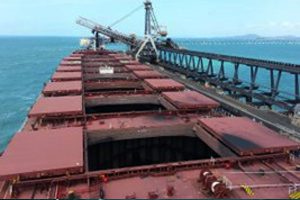 Hull and machinery insurance covers physical damage and loss of property for a vessel, including the hull, machinery, and equipment.
Hull and machinery insurance covers physical damage and loss of property for a vessel, including the hull, machinery, and equipment.
Hull and machinery insurance acts not by covering damage, but by covering risks and the damage that they cause. For example, it is common for a policy to cover marine risks such as;
- Perils of the sea
- Fire
- Jettison
- Natural disasters
- The exact risks insured will be prescribed by the insurance contract.
Damage that occurs as a result of these risks will be covered by the hull insurance, but the same damage caused by another risk will not be covered. For example, fire damage as a result of a collision with another vessel will be covered. However, war risks are not covered by hull insurance and therefore fire damage as a result of an abandoned war weapon will not be covered. Even if the fire causes the same damage, to the same part of the ship, because of the different risk cause, the insurance cover will differ.
Vessels may be insured with more than one policy and insurance provider. For example 50% of the vessel value may be insured with one insurer, and 50% with another. Or an owner may under insure by only choosing to insure 80% of the vessel’s value in order to lower the cost of insurance. However, a basic principle of hull and machinery insurance is that the insured value is limited to the market value of the vessel, this is to prevent over insurance.
Notable Inclusions
Hull insurance also includes an element of collision liability. This is a result of the long historical origins of maritime law. The cover for collision liability provided by the hull insurance will differ depending on the policy terms. It may be limited to the 75% of the insured value, or may be up to 100% of the insured value.
Additional to hull insurance, hull interest insurance (also known as total loss insurance) can be purchased as a separate product. Hull interest insurance covers total loss of the vessel. It is provided separately as the total loss of a vessel is a less regular event than hull damage, but the value of loss is higher. However, the value insured under total loss insurance is limited to 25% of the vessel’s insured value.
Exclusions
Hull and machinery insurance excludes radioactive contamination, chemical biological or electromagnetic weapons and cyber attack.
War risks are also a general exclusion from hull and machinery insurance. War risk insurance is commonly offered as an additional policy at an additional cost.
Common Policies
Vessels sail across the world and through multiple jurisdictions, this creates vast complexities in law. Standard wording for insurance cover provides some certainty among the ocean of foreign law uncertainty. Some of the most common internationally used standard insurance clauses are those referred to as the Institute Clauses. The Institute Clauses are subject to English law and jurisdiction and therefore to the United Kingdom Marine Insurance Act 1906 (MIA).
While the Institute Clauses are well known and established internationally, that does not mean that all insurance policies will follow accordingly. One example is the Nordic Plan that has certain fundamental differences. For example insurance cover through the Institute Clauses is limited to named risks only. The cover of the Nordic Plan applies to all risks, and the only exclusions are those named.
